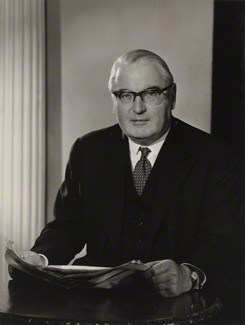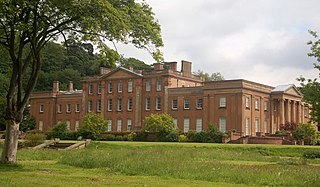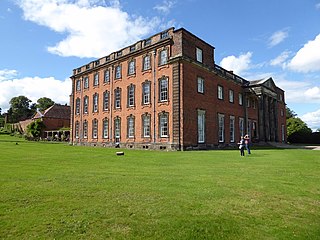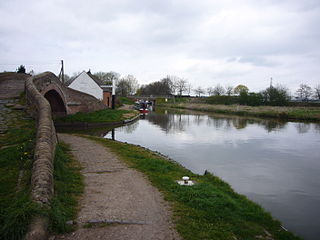Dilhorne Hall located in Dilhorne, Staffordshire, England, was the ancestral home of the Buller family.
Contents

Dilhorne Hall located in Dilhorne, Staffordshire, England, was the ancestral home of the Buller family.

The Hall occupied an area of approximately four acres but was demolished in the 1920s. Dilhorne Hall was rebuilt in about 1830 by the Buller family. It succeeded a 17th-century house had been the home of Copwood Hollins (who died in 1705) and, in the later 18th century, John Holliday. [1]
In the early 1980s Dilhorne Recreational Institute had been built on the site of the demolished Hall. The grounds of the former hall is now a park, playground and crown green bowling club. It is also the site of Dilhorne Village Hall, a venue for events both private and organised by the village hall committee as a self funding charity. Classes, such as Yoga, Salsa and Art are also run on a regular basis. The old gate house to Dilhorne Hall still stands at the entrance to the park and has been renovated to become a private house.
The Buller family were noted in the legal profession in London during the 19th century. [ citation needed ] The Baronetcy of Dilhorne in the County of Stafford was created in the Baronetage of the United Kingdom on 20 January 1866 for Edward Manningham-Buller.
In 1962 Reginald Manningham-Buller, the fourth Baronet of Dilhorne, who did not inherit the Dilhorne estate, took the title Baron Dilhorne, of Towcester in the County of Northampton. He was subsequently made a Viscount. The former head of the Security Service (MI5) Eliza Manningham-Buller, Baroness Manningham-Buller is his daughter.

Viscount Dilhorne, of Greens Norton in the County of Northampton, is a title in the Peerage of the United Kingdom. It was created on 7 December 1964 for the lawyer, Conservative politician and former Lord Chancellor, Reginald Manningham-Buller, 1st Baron Dilhorne. He had already succeeded his father as fourth Baronet of Dilhorne and been created Baron Dilhorne, of Towcester in the County of Northampton on 17 July 1962, also in the Peerage of the United Kingdom.

Ilam is a village in the Staffordshire Peak District of England, lying on the River Manifold. The population of the civil parish as taken at the 2011 census was 402.

Baron Churston, of Churston Ferrers and Lupton in the County of Devon, is a title in the Peerage of the United Kingdom. It was created in 1858 for the former Conservative Member of Parliament, Sir John Yarde, 3rd Baronet. He had earlier represented South Devon in the House of Commons. Two years later, in 1860, he assumed by Royal licence the additional surname of Buller. As of 2023 the titles are held by his great-great-great-great-grandson, the sixth Baron, who succeeded his father in that year.

Reginald Edward Manningham-Buller, 1st Viscount Dilhorne,, known as Sir Reginald Manningham-Buller, Bt, from 1954 to 1962 and as The Lord Dilhorne from 1962 to 1964, was an English lawyer and Conservative politician. He served as Lord Chancellor from 1962 to 1964.

Elizabeth Lydia Manningham-Buller, Baroness Manningham-Buller, is a retired British intelligence officer. She was Director General of MI5, the British internal Security Service, from October 2002 until her retirement in April 2007. She became a crossbench life peer in 2008.

Himley Hall is an early 17th-century country house situated in Staffordshire, England. It is situated in the south of the county in the small village of Himley, near to the town of Dudley and the city of Wolverhampton. Himley Hall is a Grade II* listed building. Its park and garden, which were extended in the 1770s by Lancelot "Capability" Brown, are Grade II listed with the National Register of Historic Parks and Gardens.

Chillington Hall is a Georgian country house near Brewood, Staffordshire, England, four miles northwest of Wolverhampton. It is the residence of the Giffard family. The Grade I listed house was designed by Francis Smith in 1724 and John Soane in 1785. The park and lake were landscaped by Capability Brown.

The Trentham Estate, in the village of Trentham, is a visitor attraction located on the southern fringe of the city of Stoke-on-Trent in Staffordshire, United Kingdom.
John Mervyn Manningham-Buller, 2nd Viscount Dilhorne was a British peer and barrister.

Milford is a village in the county of Staffordshire, England. It lies at the edge of Cannock Chase, on the A513 road between Stafford and Rugeley. Just to the north of the village is the River Sow.
The Priory Estate is a housing estate in Dudley, West Midlands, England, which has largely been developed since 1929.

Dilhorne is an ancient parish and village in Staffordshire, three miles from Cheadle and six miles from Stoke-on-Trent. The village is within the Staffordshire Moorlands area.
Colwich is a civil parish and village in Staffordshire, England. It is situated off the A51 road, about 3 miles (5 km) north-west of Rugeley and 7 miles (11 km) south-east of Stafford. It lies principally on the north-east bank of the River Trent, near Wolseley Bridge and just north of The Chase. The parish comprises about 2,862 hectares (28.62 km2) of land in the villages and hamlets of Colwich, Great Haywood, Little Haywood, Moreton, Bishton and Wolseley Bridge.

Wrottesley Hall is a 1923-built Grade II listed house in the civil parish of Perton, and historically part of Tettenhall in Staffordshire, England.

Dunston is a small village in England lying on the west side of the A449 trunk road about 3 miles (4.8 km) south of Stafford, close to Junction 13 of the M6 motorway. The population of the village at the 2011 census was 281. It lies at roughly 300 feet above sea level.

The Cheadle Coalfield is a coalfield in the United Kingdom. Centred on the town of Cheadle, Staffordshire and its outlying villages it lies to the east of Stoke-on-Trent and the much larger North Staffordshire Coalfield. The area has been mined for many years, with documentary evidence from Croxden Abbey citing coal mining in the 13th century.
Weston Coyney is a suburb of the City of Stoke-on-Trent in Staffordshire. It lies on the south eastern edge of the city and borders the neighbouring Staffordshire Moorlands district.
Teddesley Hall was a large Georgian English country house located close to Penkridge in Staffordshire, now demolished. It was the main seat firstly of the Littleton Baronets and then of the Barons Hatherton. The site today retains considerable traces of the hall, gardens and other buildings, while the former home farm remains a working farm.

Tittensor village is located in Staffordshire, England, between Newcastle-under-Lyme and Stone. The population as taken at the 2011 census can be found under Swynnerton. The village consists of mostly 1960s housing as well as the few remaining houses from the 19th century. Historically Tittensor forms part of Stone parish. The Tittensor family occupied a manor house which passed to the Gerrard family sometime before 1405. The house was destroyed and rebuilt several times over the centuries, and was finally demolished in 1834. Some of the materials were used to build St Luke's church in Tittensor which was constructed in 1880-81. The ruins of the manor house remained until they were finally demolished in the early 1960s.